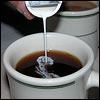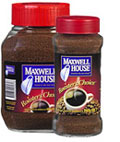Last night when I was working on my research paper, I was looking for research on food and identity and came across a name: Claude Fischler.
Fischler is a French sociologist who has written a lot on how cultural identity is shaped by food, but what intrigued me was an article from the Grist about his work entitled "
Americans need to stop multitasking while eating alone." At that very moment, I was sitting in the geology computer lab with one hand on the mouse and the other in a bag of Skittles. I had just attended the Wellness Institute's study break (props to Parvatie), where I snacked on carrots (with hummus – it's part of my aversion therapy) and zombie-themed pudding cups. I also packed a bag of Skittles, craisins, and animal crackers for the long night ahead of me.
But when I read this article, I started to realize just how often I eat alone at Colgate. It's actually sort of depressing! At the beginning of the semester, my friends and roommates and I were pretty good about making "family dinners" and going over each other's apartments to eat together. But now that it's the end of the semester, the buildup of projects, papers and looming exams has compounded everyone's time so that I eat when I
can, not when I
need to, and that means I am almost always eating alone.
Breakfast is always alone, since my roommates have different schedules than me. Lunch is my best opportunity to eat socially, as I regularly attend brown bag lunches or pack a lunch and eat it at the Coop with friends. But dinner has become such a chore, because I have so many other obligations to worry about that I don't feel I have enough time to make something good. If I actually took the time, I'm sure there are tons of blogs out there that could inform me on meals that are fast to make and delicious to eat, but I don't have time to scour the web or stalk the aisles of Price Chopper in search of ingredients. I actually haven’t been to Price Chopper since I got back from Thanksgiving break, an experiment in time management that is proving very detrimental to my eating patterns. I've been buying food from Hamilton Whole Foods (lots of money for not a lot of food) and getting my freshmen friends to use up their Coop meals on me. It's not the most dependable source of food, but I've just been prioritizing schoolwork over other things…which isn't healthy. I know that, but I can't stop myself.
I'm not alone, though. Whether eating in front of the TV or our laptops, Americans have a reputation for eating alone and while doing other activities. In his studies, Fischler examined eating habits in the US, France, England, Italy, Germany, and Switzerland, and determined that the US and France were on opposite ends of the spectrum. According to his research, Americans were obsessed with the individualism of eating, matters of personal health, and the freedom of choice, whereas the French were more concerned with the social pleasures and "joie de vivre" of eating.
I'm not entirely sold on Fischler's argument. I think it’s unfair to make it such a binary worldview, where Americans are soulless machines who eat purely for sustenance and the French spend all day sitting around a table, laughing, eating foie gras and drinking wine. During my semester in Dijon, our Colgate group loved to go out to long, lavish meals and no one ever mentioned the work we had to do or upcoming papers. Meanwhile, my French friends loved McDonald's (affectionately referred to as "MacDo") and were no stranger to instant rice and frozen meals. Maybe it's a generational difference; maybe it's a college student thing. I think kids our age worldwide are more likely to eat alone and in erratic patterns because it's our first time truly cooking for ourselves. Next year, I'll be in the "real world" so I guess that will be the true test of where I fall on the spectrum. I'm applying to teach in France so I'm hoping to learn more about Fischler's research firsthand!






 For many connoisseurs, the period from the mid-19th Century to the late 20th Century is the "Dark Age" of coffee. During this era, coffee lost its Middle-Eastern mystical charm and became commercialized and, quite frankly, ordinary.
For many connoisseurs, the period from the mid-19th Century to the late 20th Century is the "Dark Age" of coffee. During this era, coffee lost its Middle-Eastern mystical charm and became commercialized and, quite frankly, ordinary.
